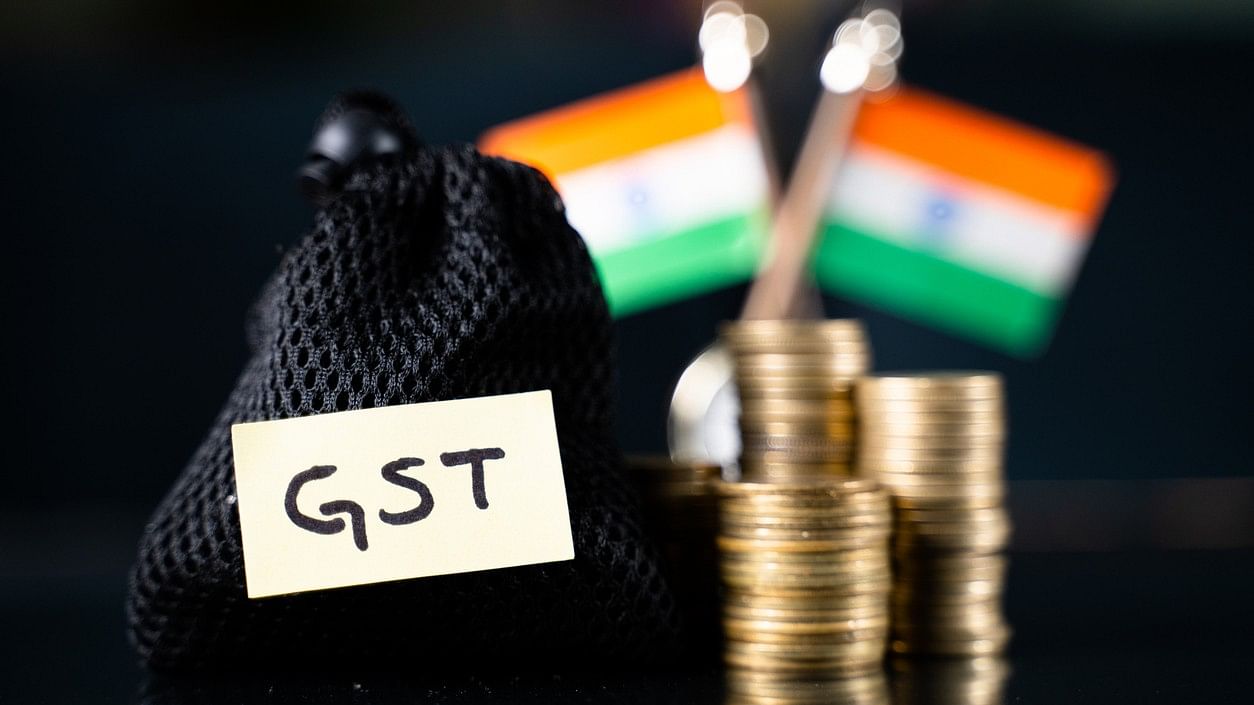
The government should sit up and diagnose the underlying reasons to see that GST growth does not slide to a single digit in 2024-2025. (Representative image)
Credit: iStock Photo
The government press release on May 1 announced that the gross GST receipts for April reached the ‘highest ever at Rs 2.10 lakh crore’ breaching the monthly ‘landmark milestone of ₹2 lakh crore’ for the first time.
The GST receipts largely accrue from the production and sales of industrial goods and commercial services, accounting for roughly 70 per cent of the GDP, which currently is growing at 8-plus per cent. With inflation factored in, it is quite natural that the GST collections record 10-12 per cent growth. The press release informed that the gross GST collections grew by 12.4 per cent in April.
Is the GST growth really a landmark growth? Is the GST booming? Or, has the GST growth flattened, and might decline further?
Days of galloping GST growth are behind us
In 2019-2020, the first year of Modi 2.0, the GST recorded a low growth of 3.98 per cent (from Rs 11.75 trillion — with a monthly average of Rs 979.47 billion — in 2018-2019 to Rs 12.22 trillion — with a monthly average of Rs 1.01 trillion).
The year 2020-2021, the year which saw the Covid-19 outbreak, proved to be a very bad one with the GST collections declining by 6.98 per cent to Rs 11.37 trillion (with a monthly average of Rs 947.34 billion.
Global supply shortages, rising imports, and a big pick up in housing construction, aided by hefty inflation in wholesale prices, made India’s GST receipts soar to Rs 14.83 trillion — with a monthly average of Rs 1.23 trillion — in 2021-2022, recording massive growth of 30.48 per cent.
The good show continued in 2022-2023 as well, albeit with a lesser stupendous rate of 21.76 per cent, with the GST collections reaching Rs 18.06 trillion, with a monthly average of Rs. 1.50 trillion.
The last year of the Modi government’s second term (2023-2024) saw the GST collections increasing only to Rs 20.18 trillion, with a monthly average Rs 1.68 trillion – with the annual growth falling to 11.75 per cent.
Note the tapering effect.
The GST growth declined from 30.48 per cent (in 2021-2022) to 21.76 per cent (in 2022-2023) and to 11.75 per cent (in 2023-2024), with growth in absolute numbers also declining from Rs 3.46 trillion in 2021-2022 to Rs 3.23 trillion in 2022-2023 and only Rs 2.12 trillion in 2023-2024.
IGST growth fell to single-digit
The Integrated GST (IGST), collected from inter-state supply and imports, is the largest component of the gross GST, and is distributed among the Centre and the states.
In 2022-2023, the IGST receipts at Rs 9.44 trillion, including from imports (Rs 4.72 trillion), constituted 52.26 per cent of the total GST collections of Rs 18.06 trillion.
The IGST collections rose to Rs 10.27 trillion in 2023-2024, including from imports (Rs 4.83 trillion), but its share in gross GST fell to 50.88 per cent. The IGST recorded growth of only 8.79 per cent with the IGST on imports recording a lowly growth of 2.39 per cent.
In April, the IGST collections at Rs 996.23 billion recorded a growth of 11.74 per cent, but fell to 47.38 per cent of the total GST collections.
Ultra-low growth and the share of IGST in 2023-2024, along with its share declining in April, should be sounding alarm bells. The government should sit up and diagnose the underlying reasons to see that GST growth does not slide to a single digit in 2024-2025.
GST numbers misleading
The government press releases first talk about ‘gross GST’. Sometimes, the government provides ‘net GST’ numbers as well. The gross GST collections minus refund of excess input GST deposited for exports etc., is the net GST. The net GST constitute the real GST receipts.
The government never provides the breakup of the net GST in net CGST, net SGST, net IGST, and for other components of the GST. This practice is quite misleading, and confusing.
In 2023-2024, as per a press release, the gross IGST collections were Rs 10.26 trillion. The same press release further informed that the government settled Rs 4.87 trillion of IGST to the Centre for the CGST, and Rs 4.12 trillion to states and UTs for the SGST. Was a total of Rs 8.99 trillion of the IGST thus settled? Where did the remaining Rs 1.27 trillion of the IGST go?
The press release has still more confusion.
Total post-IGST settled SGST revenue is stated at Rs 8.74 trillion and the pre-IGST settled SGST revenue at Rs 4.71 trillion — which indicates the IGST settled for states and UTs was only Rs 4.03 trillion. How much of the IGST was settled to states and UTs — Rs 4.12 trillion or Rs 4.03 trillion?
The confusion does not end with this.
The Controller General of Accounts, who keeps the Union government accounts, informs (through a February release) that the government had distributed Rs 432.91 billion of IGST in excess of receipts in the first 11 months. Is the net IGST settled amount shorter by this amount?
The Modi government must come clean on all these contradictions and confusions.
Fix the GST
The introduction of the Goods and Services Tax (GST) in 2017 is the biggest tax reform in India. The flattening of the GST revenues and poor accounting of gross and net GST, with its components, is a serious cause of concern. The new government must address all these issues, and make sure that the GST delivers fully on all its promises.
Subhash Chandra Garg is former Finance & Economic Affairs Secretary, and author of ‘The Ten Trillion Dream’ and ‘We Also Make Policy’.
Disclaimer: The views expressed above are the author's own. They do not necessarily reflect the views of DH.